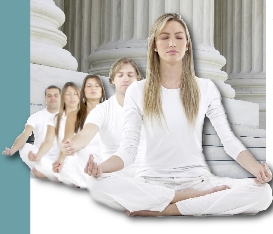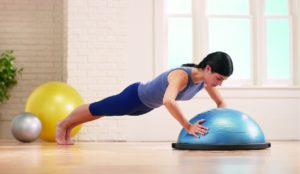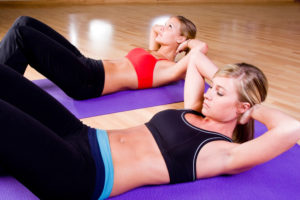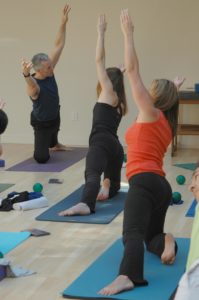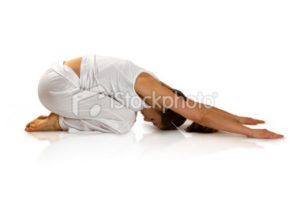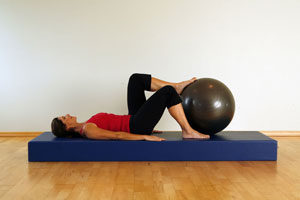Pilates
A Pilates Legacy Endures
Second-generation Pilates instructor Michele Larsson, owner and founder of Core Dynamics® Pilates in Santa Fe, New Mexico, has been practicing the Pilates Method for 41 years. A former dancer and…
Fix Your Feet With Pilates, Part One
Healthy feet are critical to good health. Although they are the foundation of the human body, many of us give little attention to their proper care. The American Academy of Orthopaedic Surgeons reports that 43.1 million people in the United States (1 in 6) have problems with their feet. Thirty-six percent regard these foot problems as serious enough to warrant medical attention (AAOS 2006).
Pilates Practice Improves Balance and Autonomy for Older Women
Practicing equipment-based Pilates twice weekly helps older women improve static balance and functional independence, according to a small study published in the Journal of Bodywork and Movement Therapies (2010; 14,…
Pilates and the Science of Human Movement
The anatomy of human movement and its importance to the Pilates Method is a provocative and complex topic. Many Pilates professionals have convergent views on the issue, while others have different perspectives and approaches. Rael Isacowitz, MA, founder and director of Body Arts and Science International® (BASI Pilates®), and Karen Clippinger, MSPE, a professor at California State University, Long Beach, are tackling this stimulating subject in a new book called Pilates Anatomy, scheduled for release spring 2011 (Human Kinetics).
The Pilates Phenomenon: Where do we go from here?
This spring, CNBC reported that Pilates is the nation’s fastest-growing activity, with 8.6 million participants, up more than 450% since 2000, based on the most recent report from the Sporting Goods Manufacturers Association (Rovell 2010). In reality, participation may have peaked mid-decade (American Sports Data Inc. reported 10.5 million participants in 2004), but clearly Pilates has staying power. The 2010 IDEA Fitness Programs & Equipment Trends report (see page 22) found that Pilates continues to grow while several other mind-body formats are declining.
A Strong Presence: Memories of Kathy Grant
Pilates Master Kathy Grant died on Thursday, May 27, 2010, at 89 years old. A student and protégé of Joseph Pilates, Grant taught the Pilates Method for more than 50 years. Grant was trained and certified by Joseph Pilates in a program sponsored by the State of New York, Division of Vocational Rehabilitation.
Trusting the Work
First-generation Pilates master teacher, Jay Grimes has well-defined opinions about the way the Pilates method should be taught and is certainly not shy about expressing them. “Teaching is the communication of knowledge and ideas and one presumes that you have that knowledge and those ideas before you begin to communicate,” he affirms. “Talking is one way to communicate about Pilates but you can also do it with a touch, a look, an expression, by using body language or with silence.
Case Study: Older Adult with Multiple Challenges
When a client who has multiple physical challenges comes to your practice it can cause a certain amount of anxiety. Before you even schedule the first session, do a thorough phone interview so you can get a strong sense of what issues the client presents. You must also get a physician’s release for exercise. If the client has been seeing a physical therapist, speak with him or her to help you understand the client’s contraindications.
Pure Principles, Plus Innovation
So far, Pilates has had quite a ride in the fitness industry, but it hasn’t been without bumps. As programming gets ever more creative, Pilates advocates have raised questions of safety, adequacy of training and method authenticity—and some experts ask whether Pilates and fitness really belong together, after all.
Welcome to IDEA Pilates Today
Welcome to your first issue of IDEA Pilates Today!
We are excited to launch this e-newsletter specifically for the Pilates community. As in other industries, Pilates has many different interest groups and factions. It is our quest to help grow Pilates and create a vehicle that will unite all parties.
Case Study: Working with a Vietnam Veteran
Greg arrived at my studio in pain, and in a wheelchair. Thirty years ago he broke his back during a “night jump” in Vietnam. A night jump is when a soldier jumps from a helicopter under cover of night, opens his or her parachute and lands blindly. Unable to see in the darkness, Greg hit the ground with his legs completely straight, sending a shock wave through his body, which resulted in a debilitating spinal injury.
How to Develop a Questionnaire
Wouldn’t it be great to know exactly what your clients want and need from you? If you are like most Pilates studio owners, you probably can’t invest a lot of money in complex statistical computer models or market research to gather data about your clientele. However, you should still collect this information on your own. For gathering data about your customers and their programming needs, there are many vehicles, including focus groups, experimental research or questionnaires.
Sample Class: Mat Pilates: Interchangeable Props
Most clubs have small pieces of equipment, or props, but not all have exactly the same props. This can be a good thing, as necessity gives you an opportunity to interchange props and jazz up your Pilates mat class—especially if you work at different facilities. This sample class outlines ways to use what you have and be creative.
Mat Pilates: Interchangeable Props Details
format: Pilates mat class using small pieces of equipment
Total Time: 35 minutes
Men and Pilates: True to the Cue
I own Pilates Body by Valentin, a studio that has a higher-than-average population of males—enough so that I can [offer] a men-only class. I have retained their membership for 6 years because they see results. The men are on time, in uniform—with shirts tucked in (yep! see photo!). My teaching method is far from flowery choreography, and cuing is in terms to which they can relate. In fact, as an experiment, I taught the same class format three times on a single day (7:00am, noon and 5:00 pm), with the same verbal cues.
Borrowing From a Master
Joseph Pilates often spoke of “principles of movement.” Over the years, Pilates enthusiasts and students have cited many principles. Six have remained consistent through the years, acting as pillars of practice. They are concentration, control, centering, precision, flow and breathing. These powerful precepts are relevant not solely to Pilates moves, however. They can be valuable tools for ensuring a safe, efficient, results-oriented workout in any type of exercise or group fitness class.
Yoga-Pilates Fusion: The State of the Union
When Pilates and yoga first hit mainstream fitness over a decade ago, instructors enthusiastically fused these traditional methods with everything from kickboxing to weight lifting, disco and rollerblading. While many of these fads have fizzled, the fusion of Pilates and yoga remains a popular combination. IDEA spoke with several leaders in the field to find out how the yoga-Pilates format has matured since the hundred was first introduced to downward-facing dog.
Pilates: Aid for Low-Back Pain
Have you experienced back pain at one time or another? Have you been told to strengthen your abdominal muscles to fix a back problem? While traditional crunches strengthen the outer layers of the abdominal musculature, they bypass the deep support structures of your back. This can place the lumbar spine in too much flexion and may even worsen your back pain, depending on what your original physical problem was. By training the deep stabilizers of the lumbar spine, pain can be alleviated and you’ll be able to return to everyday activities sooner.
Pilates for All Abilities: Working with a Prosthesis
Heidi was physically active as a dancer during high school. But by age 24 the rigors of graduate school and the loss of her left foot in a motorcycle accident propelled her into a sedentary lifestyle.
Pilates on the Ball
From its earliest beginnings, the Pilates Method used a rich variety of equipment—the reformer, the wunda or stability chair, the trap table or cadillac, and so on. Joseph Pilates himself…
Drifting in Different Planes
Pilates instructors use many planes to help students achieve bodies that can move and work efficiently. Movement awareness and proper execution are a large part of the equation. The same benefits occur in a well-rounded group exercise experience in which you introduce various movement planes. By doing so, you help participants be better prepared to move in life.
